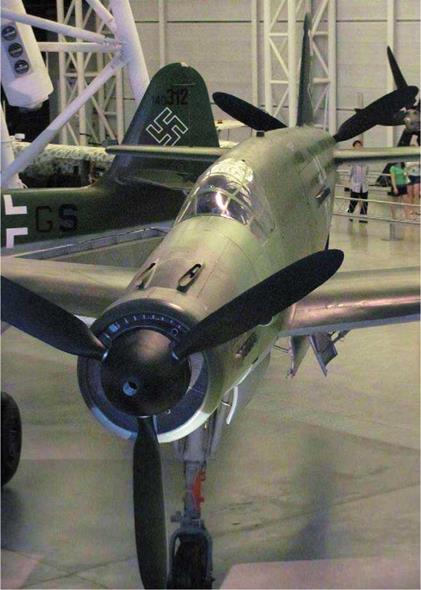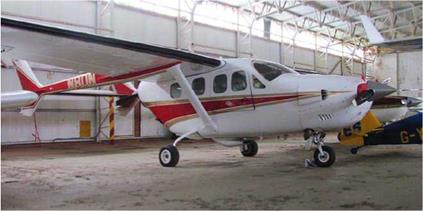Gyroscopic Effect
Any spinning mass, the propeller included will be affected by gyroscopic rigidity and precession. Rigidity is the tendency of the spinning mass to remain with its axis in a fixed position relative to space and to resist any force that tries to move it.
If an applied force succeeds in displacing the spinning mass, the resulting movement is known as gyroscopic precession, which acts as if the force was applied at a position 90° around the plane of rotation from the applied force. Tail-wheel aircraft are more prone to instability problems on take-off or landing than a nose-wheel aircraft due to the gyroscopic effect caused by the inclined prop shaft.
Consider a tail-wheel aircraft with a right-hand propeller, as the tail is raised during the take-off run, it acts as if a force is being applied to the top rear of the propeller causing it to tilt forward. However, because of precession, the propeller acts as if the force had been applied to the rear right-hand rear side of the propeller disc, causing the aircraft to turn to the left. The gyroscope force affects all propeller-driven aircraft whenever the propeller axis is forced to tilt. An increase in propeller weight, RPM, diameter, and the rate of pitch, roll and yaw movements will cause greater gyroscopic effect, which can be quite noticeable during in-flight maneuvers. During a steep turn to the left, a right-handed propeller will cause the plane’s nose to initially rise, and a steep turn to the right will cause the nose to drop. Therefore, pitching the nose up produces a right
|
|
The Dornier Do-335 Pheil is a WW II centre-line thrust
aircraft. Two Daimler-Benz V-12 piston engines of 1750 BHP
each drive three-blade feathering props. This sole example is
located in the Udvar-Hazy Centre, Chantilly, Virginia, USA.
yaw, whilst a nose-down pitch will cause a left yaw. Hence, the need to apply rudder to maintain balance during maneuvers.
In a sideslip maneuver, ‘P’ factor causes a pitching moment and the nose may rise or drop depending on prop RPM, direction of rotation and direction of yaw.
Spinning maneuvers can be adversely affected due to the greater rate of pitch, roll and yaw. The nose attitude in the spin can be either flattened or pitched down further. This will depend on the aircraft type, the control surface movements and if the aircraft is in an inverted spin, or not. Other factors such as the aircraft weight, centre of gravity location, aerodynamic or centrifugal forces, can all affect the spin behavior. The pitch – up during a spin to the right will intensify the right yawing and rolling moments, resulting in a faster rate of spin with a steeper nose attitude. Conversely, a spin to the left will be flatter due to the nose being raised by the prop’s precession force associated with left yaw. A flat spin with its greater angle of attack is always harder to recover from than a steep, nose-down spin. Getting the nose down to reduce the angle of attack and throttling back the engine are prerequisites to spin recovery. Having the power on during the spin can cause adverse affects, due to the uneven alignment of the propwash flowing over the outer wing (due to yaw) creating greater lift and less drag than the inner wing, this will cause an increase in roll and yaw
In conclusion, the effect on the aircraft’s stability and its tendency to yaw to the left on take-off with a right-handed prop will depend on the propeller’s torque, ‘P’ factor, prop location and gyroscopic effect. In addition to this left yaw, the propwash could cause an opposing rolling moment to the right. On some aircraft types where the above effects can be too great a problem, the aircraft may have a contra-rotating propeller installed to eliminate, or at least, reduce some of theses undesirable effects.
|
The Cessna 336/337 Skymaster has centreline mounted engines mounted at each end of the fuselage. |














